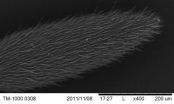(Press-News.org) A groundbreaking survey of Pakistanis has found stronger support for militant groups among the middle class than the poor. The finding by a team including Princeton researchers challenges the conventional wisdom about links between economic status and views on militants that has helped shaped American foreign-aid policies since 2001.
The nationally representative survey of 6,000 Pakistani adults, conducted in the spring of 2009, also found that Pakistanis in general held militant groups in low regard. And, when the survey results were analyzed along with data that identified the sites of violent attacks, researchers saw evidence that support for the militant groups was reduced by residents' direct exposure to militants' violent actions.
The survey and its potential implications for the way American foreign aid is distributed are described in an article published online in July by the American Journal of Political Science. The authors are Princeton graduate student Graeme Blair; C. Christine Fair, assistant professor, Center for Peace and Security Studies at Georgetown University; Neil Malhotra, associate professor, Graduate School of Business at Stanford University; and Jacob Shapiro, assistant professor of politics and international affairs in Princeton's Woodrow Wilson School of Public and International Affairs.
Expectations that poorer people are more susceptible to the appeals of violent groups have contributed to U.S. policies that focus on using aid to reduce poverty as a way to combat militant violence. But the survey found that the poor in Pakistan were substantially more negative toward militant groups than their middle class countrymen. By one measure, poor Pakistanis were up to 23 times more negative about militants than their middle-class counterparts.
"Giving development aid may be effective in improving peoples' livelihoods and making them better off in monetary ways, but it is not going to be effective in changing their minds because the poor in Pakistan are not the people whose minds we need to change," said Blair, a fourth-year Ph.D. student in the Department of Politics. "They already really dislike the militant groups."
David Laitin, the James T. Watkins IV and Elise V. Watkins Professor of Political Science at Stanford who wasn't involved with the research, said it represents an advance in scholarship on the topic.
"This paper takes one more careful step toward understanding the relationship of poverty and terror, much of it moved forward by Princeton scholars. Alan Krueger, now chairman of the [White House Council of Economic Advisers], revealed that suicide bombers came from the richer elements in countries with terrorist organizations," Laitin said. "Professor Shapiro, in an earlier paper, demonstrated that Iraqi insurgents were recruited more successfully from the employed than the unemployed. And this paper pushes us further, showing that the absolutely impoverished in Pakistan are less likely to support terrorist cells.
"Poverty is bad enough, these Princeton scholars show us, but the poor aren't willing accomplices to terror."
The survey, which the journal article describes as "arguably the first valid, national measurement of attitudes toward militant groups in Pakistan," used a novel technique to measure support for four militant groups: Kashmiri tanzeems (or organizations), the Afghan Taliban, al-Qaida and sectarian tanzeems.
Participants were visited, normally at their homes, by survey teams between April 21, 2009, and May 25, 2009. In keeping with cultural norms of the area, participants were surveyed by a member of their own sex.
Participants weren't asked directly about support for the groups — which could have been dangerous for those conducting the survey and could have skewed results.
Instead, some participants were asked their level of support for four policies — such as universal polio vaccination across Pakistan. When other participants were asked about their support for the same policies, the survey takers noted that one of the militant groups supported each policy.
From the difference in responses, researchers estimated support for the groups themselves.
"At the time we were in the field, the subject of militancy was a tense one in Pakistan," Shapiro said. "So asking people directly how they felt about specific organizations, lots of people wouldn't tell you how they felt. The estimate of support you would draw if you asked people directly would be biased."
The researchers later compared the locations where the survey was conducted with areas where political violence had been reported, using data they collected on 27,570 incidents of such violence. The researchers found that dislike of militant groups was stronger among the urban poor living in areas affected by militant violence in the year before the survey.
"Our interpretation of the fact that the urban poor in Pakistan are the most negative toward militant groups suggests to us that these are the people who are most affected when a bomb goes off," Shapiro said. "The average upper-middle class family in Pakistan doesn't go to the market for itself, isn't out in exposed public spaces that much and its income isn't extremely vulnerable to short-term disruptions. But of the urban poor, all of that is true."
Shapiro said that a similar survey undertaken in the winter and spring of 2012 and overseen by many of the same researchers indicates that militancy has become an even more sensitive topic in Pakistan than it was when the original survey was taken, though it is too early to know how support levels for militant groups has changed.
"We know now that poor Pakistanis are more negative towards militants than others," Shapiro said. "Now we want to understand exactly why, and the new survey is designed to help get at that."
The results of the 2009 survey are part of a growing body of research that calls into question a direct link between economics and violence, Shapiro said.
"There are a ton of wonderful reasons to give money to Pakistan and try to support economic growth there and in lots of other places," Shapiro said. "But when we premise it on what I think is an incorrect notion that doing so is going to change people's political views, we're distorting how we spend the money. Foreign aid is scarce and powerful and should be spent on making people's lives better."
And over the past several years, Shapiro said, the U.S. government has begun rethinking how it directs development spending, focusing more on how aid programs can address specific grievances that are motivating people to support militant groups.
Another potential area to focus aid is on helping residents understand the consequences of militant violence, Shapiro said. That includes helping middle-class and upper-class Pakistanis understand the extent to which their country's underperformance economically compared with its peers is a consequence of the presence of militant organizations, he said.
###The survey in Pakistan and related data collection on violence was supported by the International Growth Center, the Air Force Office of Scientific Research and the Department of Homeland Security through the National Center for Risk and Economic Analysis of Terrorism Events.
Survey shifts spotlight away from poor as key supporters of militants in Pakistan
2012-09-11
ELSE PRESS RELEASES FROM THIS DATE:
High-altitude winds have large potential as a source of clean energy
2012-09-11
Airborne wind energy—an emerging approach to harnessing high-altitude winds—could scale up fairly quickly if given significant government support for research and development, according to a survey of experts by Near Zero, a nonprofit energy research organization.
Winds near Earth's surface are already used to generate substantial amounts of electricity. However, higher in the sky—much higher than today's wind turbines can reach—winds tend to be stronger and steadier, making these winds an even larger source of energy. According to recent research, the amount of energy ...
Salt seeds clouds in the Amazon rainforest
2012-09-11
It's morning, deep in the Amazon jungle. In the still air innumerable leaves glisten with moisture, and fog drifts through the trees. As the sun rises, clouds appear and float across the forest canopy ... but where do they come from? Water vapor needs solid surfaces to condense on. Airborne particles are the seeds of liquid droplets in fog, mist, and clouds.
To learn how aerosol particles form in the Amazon, Mary Gilles of the Chemical Sciences Division at the U.S. Department of Energy's Lawrence Berkeley National Laboratory (Berkeley Lab) and David Kilcoyne of the Lab's ...
UF researchers name new cusk-eels useful for understanding environment
2012-09-11
GAINESVILLE, Fla. -- A study by University of Florida and University of Kansas researchers describing eight new cusk-eel species provides data for better understanding how disasters like the 2010 Gulf of Mexico oil spill impact biodiversity and the environment.
The 60-year study appearing Tuesday in the Florida Museum of Natural History Bulletin provides a comprehensive taxonomic revision of one of the least-studied groups of cusk-eels, bony fishes distantly related to cod. Although abundant and widespread in the Americas, the fishes in the genus Lepophidium have previously ...
GEN reports on ocular therapeutics targeting the retina
2012-09-11
New Rochelle, NY, September 10, 2012-- Therapies for retinal diseases are expected to overtake those for glaucoma by 2014, reports Genetic Engineering & Biotechnology News (GEN). Because current retinal disease treatments only improve vision for six to eight weeks, there is a critical need for new remedies, according to a recent issue of GEN.
"As increasing numbers of baby-boomers continue to grow older, many will have to deal with eye diseases such as age-related macular degeneration," said John Sterling, Editor-in-Chief of GEN. "Some estimates put the current AMD and ...
Pain drug can kill resistant tuberculosis
2012-09-11
NEW YORK (September 10, 2012) -- An off-patent anti-inflammatory drug that costs around two cents for a daily dose in developing countries has been found by researchers at Weill Cornell Medical College to kill both replicating and non-replicating drug resistant tuberculosis in the laboratory -- a feat few currently approved TB drugs can do, and resistance to those is spreading.
Their findings, published online by the journal PNAS, point to a potential new therapy for the more than 500,000 people worldwide whose TB has become resistant to standard drug treatments. But ...
Rhode Island Hospital study shows wine has more cardiovascular benefits than vodka
2012-09-11
PROVIDENCE, R.I. – The next time you call someone a drunken pig, remember this study. Rhode Island Hospital researcher Frank Sellke, M.D., chief of cardiothoracic surgery at Rhode Island and The Miriam hospitals, and his colleagues studied the effects of red wine and vodka on pigs with high cholesterol and found that the pigs with a penchant for pinot noir fared better than their vodka swilling swine counterparts. The paper is published in the September issue of the journal Circulation.
"There has been previous research touting the benefits of moderate consumption of ...
Ants have an exceptionally 'hi-def' sense of smell
2012-09-11
Ants have four to five times more odor receptors than most other insects, a team of researchers have discovered.
The research team, led by Lawrence Zwiebel at Vanderbilt, recently completed the first full map of olfactory system that provides ants with their sense of taste and smell. They found the industrious insects have genes that make about 400 distinct odorant receptors, special proteins that detect different odors. By comparison, silk moths have 52, fruit flies have 61, mosquitoes range from 74 to 158 and honeybees have 174.
"The most exciting moment for me was ...
Researchers find 2 gene mutations drive adrenal cancer
2012-09-11
This press release is available in Portuguese.
ANN ARBOR, Mich. — Two different genetic mutations cooperate to induce adrenal cancer, according to a new study from researchers at the University of Michigan Comprehensive Cancer Center and University of Sao Paulo in Brazil.
The finding provides new clues to this rare and deadly cancer type, and researchers hope it will lead to better treatments by targeting both mutations.
About 600 Americans are diagnosed with adrenal cancer per year. It is typically diagnosed in late stages when there is nearly no chance of survival ...
CWRU nurse researchers find effort takes its toll on unpaid family caregivers
2012-09-11
According to AARP, the annual cost of unpaid elder caregiving – work that falls mainly on the backs of family members – runs about $450 billion.
While some companies document the physical and emotional toll that the workplace takes on their employees, exactly how draining caregiving might be has never really been measured.
So Case Western Reserve University nurse researchers studied it.
"Without knowing the impact of effort, we have two vulnerable people at risk for health issues—the caregiver and the care receiver," said Evanne Juratovac, assistant professor at ...
'Civilian cyber-warriors' not driven by patriotism
2012-09-11
EAST LANSING, Mich. -- People who commit cyber-attacks against the government also tend to download music illegally and participate in physical protests. Surprisingly, however, they don't appear to be acting out of some sense of national pride or patriotism.
Those are some of the findings to emerge from a Michigan State University study that for the first time begins to paint a profile of "civilian cyber-warriors," or people who engage in attacks against domestic or foreign governments. Cybercrimes pose a huge societal risk and have become a hot issue globally, yet little ...





